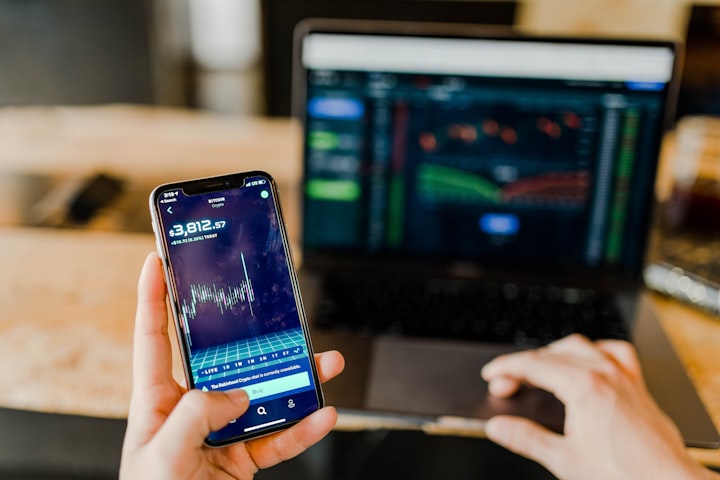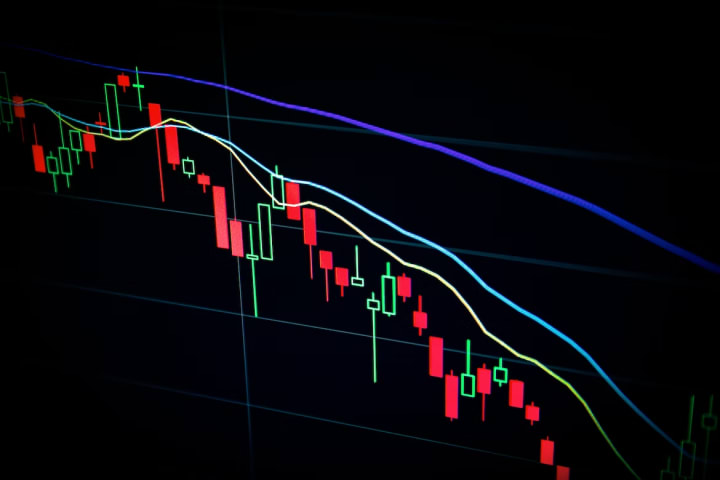Is it true that you have money even if you don't work?
What is financial freedom?

The topic we are sharing with you today is, having money even if you don't work.
I believe many of you are interested in this topic. How do you go about achieving money without working?
What is financial freedom?
First of all, let's understand what is financial freedom.
Financial freedom is what we usually call 'having a passive income.
There are usually two things to understand.
Firstly, it is having money to live on, you have to be able to meet some of your basic living expenses.
Secondly, if you have money, but still have to rely on your active labor to earn your income every day, this is not considered financial freedom, this is still paying for your human assets, through human assets in exchange for cash flow.
Therefore, to achieve financial freedom, we need to achieve a passive income, which can be more than our living expenses, so that we can achieve financial freedom.
Firstly, it has to be able to meet our daily needs.
Secondly, it has to be free, i.e. freeing up human assets.
It has to be able to achieve both of these objectives.
The Norwegian Government Pension Fund
Let's look at a case study of one of the largest government pension funds in the world: the Norwegian Government Pension Fund.
Norway is a very interesting country in that it is very rich in energy assets. It has a lot of energy assets and relies mainly on the sale of energy assets such as oil to generate income.
However, the energy industry itself is rather homogeneous, and extracting oil is its main income, one day the oil will run out, and if one day the oil runs out, what should be done?

So, to solve this problem, the Norwegian government set up a government pension fund in 1990, putting the country's oil revenues in the pension fund and investing them regularly in long-term financial products through the pension fund.
How are these financial assets allocated?
First of all, it invests in the world's equity assets plus the world's bond assets, to diversify risk in this way.
If a country invests, it does not want to invest in just one or two companies, which would expose it to a higher risk overall.
So, the Norwegian government pension fund has converted its assets into worldwide equity assets and worldwide bond assets.
Secondly, how are these equity assets allocated?
In the beginning, it was still buying more debt, about 40% of it was allocated to global equity assets and 60% to global bond assets.
But over time, the return on equity assets would be a little bit higher than the return on bond assets. So, later on, equity assets became the mainstay of government pension funds.
In this way, from 1990 to now, it took 30 years for Norway to gradually convert its oil revenues into global equity assets and global bond assets.
In the 10 years from 2008 to 2018, the Norwegian Government Pension Fund has achieved an annualized long-term return of 8%.
The fund is now close to USD 1 trillion in size and is one of the largest government pension funds in the world.
Many countries have since followed the same example.
For example, we are familiar with Saudi Arabia, which is also an oil-based country.
In Singapore, for example, there is Temasek, which is also a national sovereign fund that invests this part of its wealth in equity and bond assets around the world.
What is the current population of Norway?
The population of Norway is only 5.29 million, which is equivalent to the population of one district in Beijing or Shanghai. But with such a small population, the government pension fund is still close to USD 1 trillion.
What is this concept?
The equivalent of $189,000 in global equity and global bond assets is allocated to each person, and this amount is still gradually accumulating.
It's not out of oil yet, still gradually going on to accumulate government pension funds, and will still be investing the same amount of money in worldwide equities and worldwide bonds.
In another ten or twenty years, it may have distributed hundreds of thousands of dollars per capita to reach such an asset.
Even if the oil revenues were to be exhausted one day, the financial assets owned by the country as a whole would still be sufficient to meet its future needs and they would not need to worry about what would happen if the country's oil resources were exhausted.
We have seen a typical case of a government pension fund where a country can turn its income into global financial assets in stocks and bonds and still have a good long-term income even if Norway runs out of oil in the future.
If the oil resources are exhausted in the future, it will still be able to generate cash flow from the stocks and bonds in its hands to maintain the quality of life of the country and its people.
How would an ordinary family solve a similar problem?
How can an ordinary family imitate Norway and achieve a similar result?
How can an individual achieve financial freedom?
It's very simple, and it's similar to the Norwegian government pension fund we've just described.
We invest our pre-retirement salary in some financial assets, and when the financial assets have accumulated to a certain size and can meet our daily needs, we will be financially free.
The 4% rule of financial freedom
So, how much do you need to achieve financial freedom?
There is a very good rule here, the 4% rule.
The 4% rule was introduced by William Bengen, an academic at MIT, in 1994.
By investing in equities or other financial assets and withdrawing no more than 4.2% of our pension each year to pay for our daily needs, we will not be able to spend all of our pension until we retire.
This is because the equity assets will increase in value and the increase in value can exceed the 4.2% annual withdrawal rate.
So, in this way, it is possible to achieve financial freedom. If we round up a bit, it is 4%, which is commonly known as the 4% rule.
In other words, let's say we have a family that needs to spend $100,000 per year, and $100,000 divided by 4% equals $2.5 million.
Such a family, with $2.5 million of equity or bond assets in hand, has the potential to achieve financial freedom.
You can think about how much your family spends in a year, and then divide that figure by 4%, which is the amount of wealth we need to achieve financial freedom.
Case: A Taiwanese couple who invested for ten years to achieve financial freedom
Let us give you another very graphic example of the application of the 4% rule.
This example is also from a book I have read before, the name of the book is "Rich even if you don't work", which is similar to our topic today.
I've told you about this book before, so if you're interested, click here to read it.
It's possible to make money without working! |The Screwtape Book
The authors of this book are a young couple from Taiwan, who spent 10 years to achieve financial freedom.
First of all, they used a similar 4% rule, when they needed to accumulate about 30 million Taiwan dollars, which translates into about 6.5 million RMB.
If he had 6.5 million RMB, multiplied by 4%, he could withdraw no more than 260,000 per year to support one of their dreams, and what was that dream, which was to achieve financial freedom and then travel around the world?
This case is a real case, they did achieve financial freedom through this method more than 10 years ago and ended up traveling around the world. How did they manage to accumulate a fortune of about $6.5 million over 10 years?
They didn't inherit a house, they didn't sell a house to achieve financial freedom, they did it on their own, by working, investing, cutting costs, cutting sources, and fixing investments, these are the three main methods they used to achieve financial freedom.
The first method is to cut costs.
The word "cutting costs", which I think we all know more or less, is to save money. I don't need to give you detailed tips on how to save money here, as I'm sure you've seen a lot of content on this in general.
From my perspective, there are three main ways to save money.
The first is to keep a ledger.
Many people are not in the habit of keeping accounts, but if we don't know where our money is going and we end up measuring our expenses as a whole, it's a very difficult thing to do, so the first thing to do is to keep an account.
Secondly, distinguish between wants and necessities.
Very often, we just want to buy a thing on impulse.
For example, this business model of a live shopping guide is an important manifestation of impulsive spending.
I think that for the accumulation of family assets, we need to distinguish between wants and necessities. Sometimes we watch some e-commerce anchors who introduce something to us and think that it might be useful, or that it is cheap and I need to stock up on it, but it is only a want, not a necessity.
Thirdly, putting a life label on consumption.
I think this is an interesting approach, labeling consumption with a life.
What does it mean to put a life label on consumption?
For example, if you have your eye on a mobile phone, which costs $4,000, you can calculate how much you can earn in an hour.
A normal 22 working days in a month, working 8 hours a day is over 170 hours of work in a month. You divide your monthly income by the number of hours you work and you get your hourly rate.
When we are spending, we can go through the maths. For example, if your hourly rate is $100, and you buy a $4,000 mobile phone, that is equivalent to you working 40 hours, and the phone consumes 40 hours of your life, which is putting a life label on the consumption.
Thinking about this, when you spend a lot of money again, you will deliberately avoid some unnecessary consumption.
The second method is open source.
The second is how to open source. It is not enough to just cut back, cutting back is the easiest thing to do because our total amount may be relatively small, in this case, we have to think about going to open source, to raise our income.
How do you go about raising your income?
There are two main ways.
Firstly, work hard and try to get a pay rise.
Secondly, to explore other sources of income.
For example, we often hear the term "slash youth".
The term "slash youth" means that everyone has not only one source of income but also other sources of income so that they can have a better overall family income.
In the example of the Taiwanese couple we just mentioned, they started with a monthly household income of about 15,000 and by the time they "retired" 10 years later, their overall monthly household income had risen to 50,000-60,000.
Part of the reason is that they have worked hard to increase their income, and part of the reason is that they have been able to increase their overall household income by expanding different sources of income, and in this way, they have been able to save more money for investment by cutting back on expenses.
The third method, fixed investment index funds
The third method is to invest in index funds to magnify their returns. In the beginning, they saved about 80,000 yuan a year to invest in index funds. After 10 years, they were able to save about $500,000 to $600,000 a year to invest in index funds.
From 2003 to 2013, they accumulated about RMB 6.5 million in index fund assets through fixed investment and eventually achieved their goal of financial freedom.
After 2013, they went on a trip around the world.
We have saved and accumulated a certain amount of assets. The next thing that comes to mind is to invest in a variety with a high rate of return and end up accumulating more family assets.
However, when faced with the choice of fund varieties, most of the time the higher the return, the higher the risk.
What are the assets that we usually invest in and what is the difference between their returns?
This is the chart we see here. The three types of funds we most commonly use are money funds, bond funds, and equity funds, and there are certain differences in the long-term returns of these three fund types.
First of all, we see the bottom graph, which is a trend of money funds, the return of money funds itself is relatively low, and the trend is very flat.
Secondly, this line in the middle is the bond fund, the bond fund's return is higher than the currency fund, but the bond fund itself has certain fluctuations, including some time ago in May to June, many bond funds have fallen, but its overall risk is not particularly large when the investment does not need to worry too much.
Thirdly, the most volatile fund at the top of this chart is the equity fund, which has a high return, and the return on the equity fund is much higher than the bond fund and money fund after a long period.
So when we invest for the long term, including the couple in Taiwan, they are building their assets with equity funds, or index funds, to build their family assets so that they can get a better return in the long term.
The best way to invest in equity funds: fixed income
Another question arises: what is the best way to invest in equity funds?
The most suitable investment method for equity funds is fixed investment.
Most of us who are working, are doing fixed investments.
For example, every month when we get our pay stubs, five insurance, and one fund will be deducted from it. Have you ever thought about the five insurance and one fund, where does it go in the end?
The state aggregates our five insurance and one fund into a pension fund and a social security fund, just like the Norwegian government pension fund, to invest in other assets, so that when we retire, we can receive our pension.
However, one problem with pension funds and social security funds is that the vast majority of their allocations are in bonds, not equities.
The difference between them and the Norwegian government pension fund that we have described is that the Norwegian government pension fund has a very high allocation to equities, whereas our pension fund and social security fund have a relatively low allocation to equities at the moment, but over time the return on equity assets will be higher.
Therefore, we need to increase the proportion of equity assets allocated to ourselves.
In other words, we need to learn from pension funds and social security funds and make ourselves a fixed investment plan for equity funds to supplement our equity assets, so that our household assets can appreciate faster.
However, as we have just said, equity funds are very volatile. As we can see in this chart, A-shares often see a short-term two to three times a year, and then click down another 40 to 50 percent.
So, equity funds are a high-return, high risk
About the Creator
Clemmens Crofton
An eye for an eye thought for an obsession.
Enjoyed the story? Support the Creator.
Subscribe for free to receive all their stories in your feed. You could also pledge your support or give them a one-off tip, letting them know you appreciate their work.






Comments
There are no comments for this story
Be the first to respond and start the conversation.